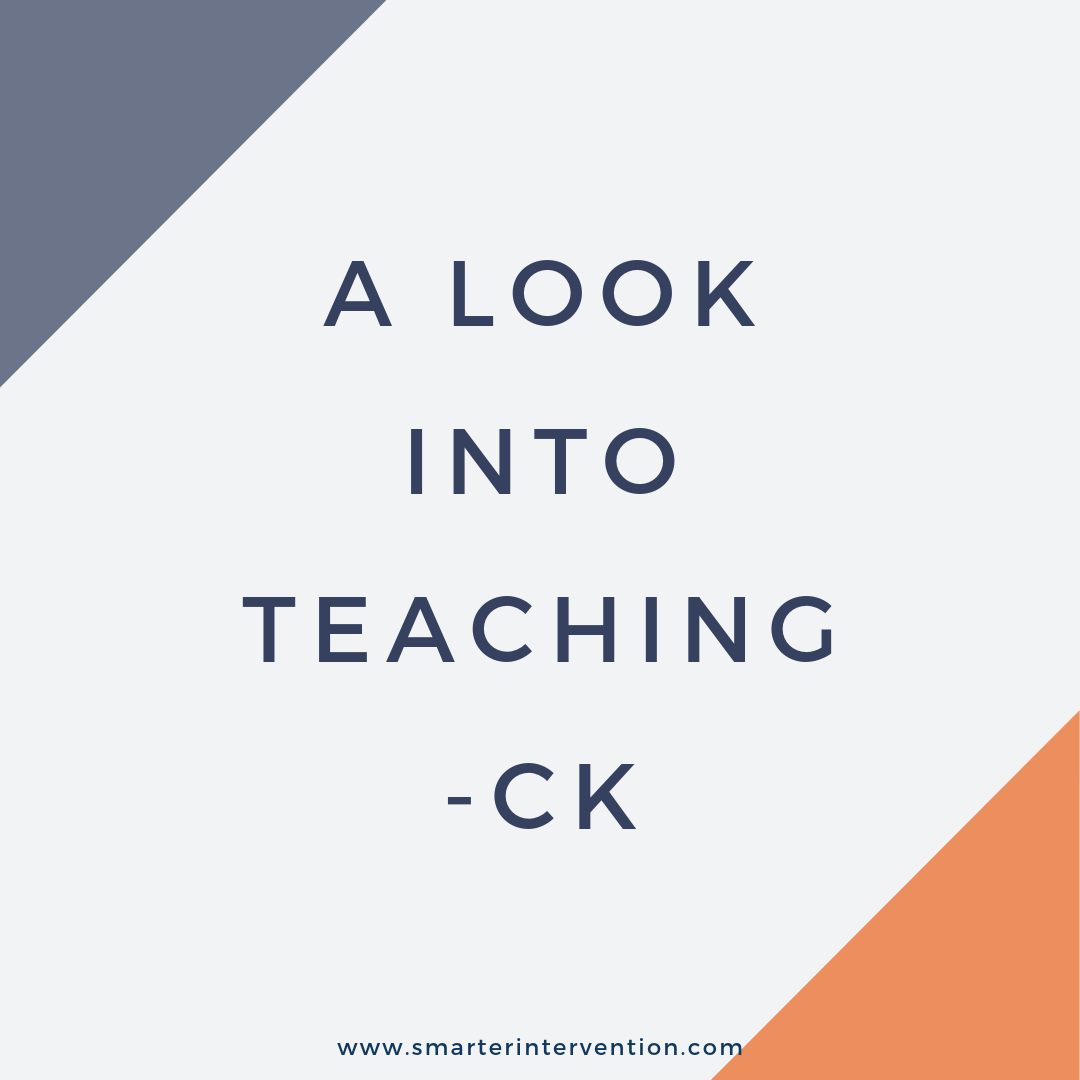Science-based literacy resources and articles
for families, educators and schools
Search by Category:
Categories
- Advocacy
- Authentic Literature
- Business
- Comprehension
- Data Tracking
- Differentiation
- Dyslexia
- Evaluation and Assessment
- Executive Functioning
- Games & Activities
- Helping My Child At Home
- How To
- IEP/504 Plan
- Lesson Planning
- Math
- Online Intervention
- Organization
- Parents
- Phonics
- Phonological Awareness
- Reading Comprehension
- Reading Fluency
- Research
- SLP
- Spelling
- Vocabulary
- Writing
A Look into Teaching -ck
Reading intervention for struggling readers, such as those with dyslexia or other reading disabilities needs to be systematic, sequential, cumulative, targeted, research-based…the list goes on and on. But how do you come up with a lesson plan that has reading and spelling activities that hits on all of these targets for your struggling readers? Well look no further, we are giving you behind the scenes access to our comprehensive lesson plans that leave nothing out for your struggling readers so that they can get to grade level once and for all and you can stop spending all your time planning.
What is Structured Literacy?
Discover the power of Structured Literacy! Unveil a systematic, multi-sensory, and cumulative approach to literacy instruction. Learn how to build a structured literacy program, addressing the core components of phonological awareness, phonics, vocabulary, fluency, and comprehension. Elevate your teaching with intentional, thought-out progressions for lasting impact!
How to Teach Red Words
What on earth are Red Words anyway? Sight words? High-frequency words?
For us, Red Words are phonetically irregular words. They are quite simply words that can't be sounded out. If you sound them out they come out all wrong. "Was" for example is a Red Word. If we sounded this word out based on syllable type (extra points for you if you knew it would be a closed syllable) you would get /w/ /a/ /s/ which would rhyme with gas. Makes sense right? But instead, we get a lazy/schwa vowel in there and get a short /u/ sound. So we just have to memorize these words for both reading and spelling.
Multi-sensory Reading Explained
Unlock the power of multi-sensory instruction in reading! Discover how to engage sight, hearing, and touch to enhance learning. From air writing letters to spelling dictation, explore practical methods to make reading instruction more effective. Embrace multi-sensory techniques without the fuss – it’s about engaging multiple senses for better comprehension and retention!





